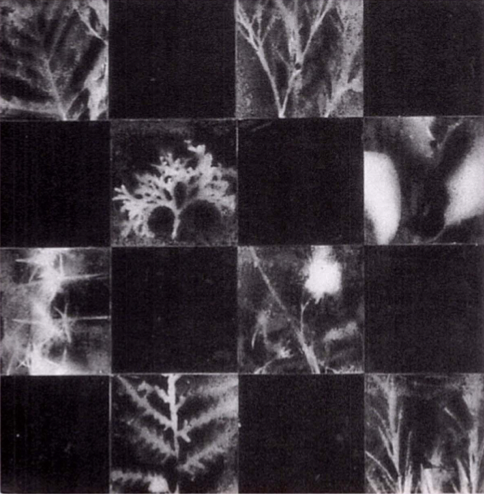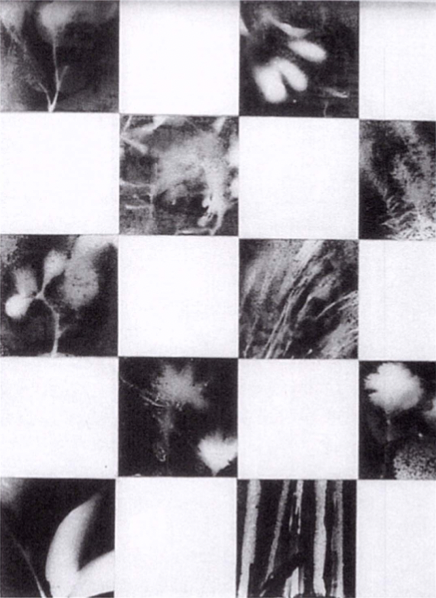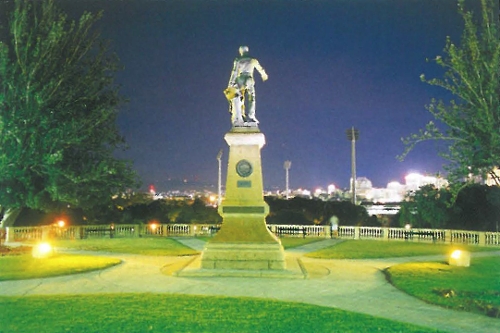
Current concerns with place fall between the extremes of absolute specificity and relative placelessness as Australians become more aware of the micro-environments in which they live as well as more integrated into a world economy and culture. Each of us are familiar with places such as the internet, airports, chain restaurants and shops, that make it possible for us to move around the world yet seem to stay in the same place, or contradictorily to stay in one place and move around the world.
At the same time as these non-specific places become more available to us, increased understanding of ecology, indigeneity and a self-preserving instinct for home assert the value of intimate knowledge of place built up over decades and generations if not centuries. Yet longevity in a place is not a choice available to a lot of people, whether through migration, dispossession, the diasporas brought about by the events of world history, or personal quests for prosperity in the pursuit of careers, dreams or even love.
Environmental historian Peter Read, in his two recent books Returning to Nothing: lost places (1996) and Belonging: Australians, Place and Aboriginal Ownership (2000) seeks, in his own words, 'to shape an imprecise but certain knowledge.' His research emphasizes in particular the historical moment at which Australia and Australians have arrived, a time for the telling, affirming and elaboration in a new way of the belonging to Australia of non-Indigenous Australians.
General knowledge of Aboriginal and Torres Strait Islander prior ownership and culture is now irrevocably widespread and entrenched both legally and conceptually in Australian history. This can be clearly seen in the stories that museums are now telling and in educational material for schools. Black armband/white blindfold – the truth surely lies somewhere in-between but it is certain that many Indigenous concepts such as 'dreaming', 'country', 'sacred site', 'women's business' have firmly entered the Australian vernacular. This is evident even in the title of the recent volume Words for country: landscape and language in Australia (2002) edited by Tim Bonyhady and Tom Griffiths, a series of essays by different authors on specific histories of place.
Closer understanding of Australia's human past goes hand in hand with an awareness of its unique flora, fauna, landforms, climate and so on. Yet much of the current energy and vitality of understanding Australia right now lies in the fresh valuing and recognition of the hybridity of non-Indigenous peoples and their stories, both those originating here and those brought here from scores of other places. No cultural group has a monopoly on the notion of attachment to place. The cross-cultural links, the translations of languages and meanings that may be drawn across such common feelings may be useful for acknowledging similarities between different peoples.

broom (Cytisus scoparius), African daisy (Senecio pterophorus,) Gorse (Ulex europaeus).
Could it be that a unique type of polyculture is possible in Australia, where recognition of the Indigenous need not be used to cause non-Indigenes to cringe because of their relatively recent arrival on this soil but the Indigenous can be seen as a proud predecessor and exemplar of the rich possibilities of endemic or highly adapted development to place, alongside a usefully increased awareness and taking into account of the global as well as of the local? We are certainly all indigenous to the earth
Local understanding of climate, vernacular and geography, the beauty and depth of an intimate knowledge of a place is something that Aboriginal art expresses effortlessly. Art that is made by non-Aboriginal artists whether they are from European, Asian, Middle Eastern, South or North American backgrounds also relates to Australia as a place as well as connecting to complex global issues. Local knowledge of the land cannot be acquired quickly. It involves duration, it takes account of the seasons of the earth, the passage of the sun across the sky, the angle of light, the passing of time, cycles and rhythms both circadian and annual.
Yet place is not only about land, it is also about habitation (living) and habitations (homes), about cities and suburbs, cultures and civilizations, thoughts, ideas and philosophies, objects, scents, dreams, memories, words. The taste of a certain food may call up associations that evoke another place and another time. You can be reading a book and return to where you are sitting and know that you have been to another place.
Taking a broad view of the idea of place enables this issue of Artlink to reflect the multiplicity of places now present in Australia. Place evokes common ground rather than difference even as it contradictorily marks that common ground by its valuing of the validity and significance of individual experience. Place transcends such terms as regionalism and provincialism as it emphasizes the universality of the need to belong. Connecting threads tug and pull across the work of the writers and artists in this issue of Artlink. Many articles are linked to websites that expand the material present in the magazine. Each piece of work here alerts us to place as something both familiar and strange, as something within us as much as it is outside us.
There are about 150 different ethnic groups in Australia, there are around 8,000 world-wide. In the face of the current intermingling of cultures around the world it has been claimed that it is no longer possible to 'understand' each other culture we may encounter and to thus base civic behavior and rules on rationality. Rather it has been suggested that the new civic values should be tolerance, love, trust and mildness which, at this moment of ongoing world crises, is definitely worth taking to heart in order that the future is entered with a sense of possibility and awakening.












